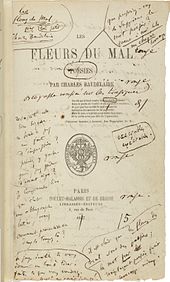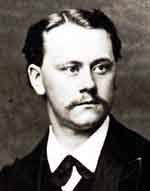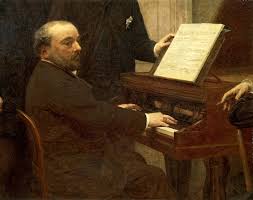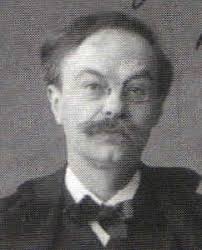
Charles Baudelaire
When Charles Baudelaire published his collection of poems entitled Les Fleurs du Mal (The Flowers of Evil) in 1857, he shocked an entire generation. “Candor and goodness are disgusting,” he wrote in the epilogue, describing his masterpiece instead as a “nice firework of monstrosities.”
If rape, poison, dagger and fire,
Have still not embroidered their pleasant designs
On the banal canvas of our pitiable destinies,
It’s because our soul, alas, is not bold enough!
Among poems dealing with decadence and eroticism, “L’invitation au Voyage” lacks the grotesque imageries of the real world. The poet invites his mistress to dream of another, exotic world, where they could live together.

Baudelaire’sLes Fleurs du Mal
My child, my sister,
think of the sweetness
of going there to live together!
To love at leisure,
to love and to die
in a country that is the image of you!
The misty suns
of those changeable skies
have for me the same
mysterious charm
as your fickle eyes
shining through their tears.
There, all is harmony and beauty,
luxury, calm and delight.
Henri Duparc: L’invitation au voyage (Giorgos Kanaris, baritone; Thomas Wise, piano)

Henri Duparc
As with much of Baudelaire’s poetry, however, the dream maintains a vague sense of nightmare. It presents a sequence of flashing images without meaning, and a cloud of symbols with no system. “His lover is crying and her eyes look treacherous to him, their mystery shadowing the sunlight of his dreaming. The refrain will succeed only in part in restoring a peaceful atmosphere: the reader already knows that it’s nothing more than an illusion.”
Gleaming furniture
polished by age
would decorate our bedroom;
the rarest of flowers
would mingle their fragrance
with the vague scent of amber;
the rich ceilings,
the deep mirrors,
the splendor of the Orient –
everything there
would speak in secret
the soul’s soft native tongue.
There, all is harmony and beauty,
luxury, calm and delight.
Emmanuel Chabrier: L’invitation au voyage (Mary Bevan, soprano; Amy Harman, bassoon; Joseph Middleton, piano)

Emmanuel Chabrier
The dream confuses the souvenirs of the poet’s childhood with the only golden period of Baudelaire’s life. Furniture and flowers recall the life of his comfortable childhood, which was taken away by his father’s death. It contrasts sharply with his current life of a poor poet, who eventually had to go to court to defend against the charge that his collection was in contempt of the laws that safeguard religion and morality.

Alphons Diepenbrock
In 1841, his stepfather had sent him on a voyage to Calcutta, India, in hopes that the young poet would manage to get his worldly habits in order. The trip provided strong impressions of the sea, sailing, and exotic ports, which he later employed in his poetry. The sense of “oriental splendor” is a recurring theme in many Baudelaire’s poems, and his Indian voyage provided an obsession of exotic places and beautiful women. In “L’invitation au voyage” these two elements combine in one photograph, one single dream of perfect happiness.
Alphons Diepenbrock: L’invitation au Voyage (Christa Pfeiler, mezzo-soprano; Rudolf Jansen, piano)
See how those ships,
nomads by nature,
are slumbering in the canals.
To gratify
your every desire
they have come from the ends of the earth.
The westering suns
clothe the fields,
the canals, and the town
with reddish-orange and gold.
The world falls asleep
bathed in warmth and light.
There, all is harmony and beauty,
luxury, calm and delight.

Hans Gefors
In the final stanza the dream reaches its resounding triumph. Vessels come from the ends of the earth to satisfy the desires of the poet’s mistress, and she is not crying anymore. The light of the setting sun turns everything golden and glorious, and the real world falls asleep. When night approaches, the dreamers achieve some real peace and they can live the beauty denied by reality. As Baudelaire tellingly writes, “how mysterious is imagination, the Queen of the Faculties.”
Hans Gefors: L’invitation au voyage (Brigitta Svenden, mezzo-soprano; Nils-Erik Sparf, violin; Mats Bergström, cond.)

I have always loved this poem for its sound in French and for its imagery. For me, the imagery suggests a kind of life in death, or death in life, corresponding to Elysium.